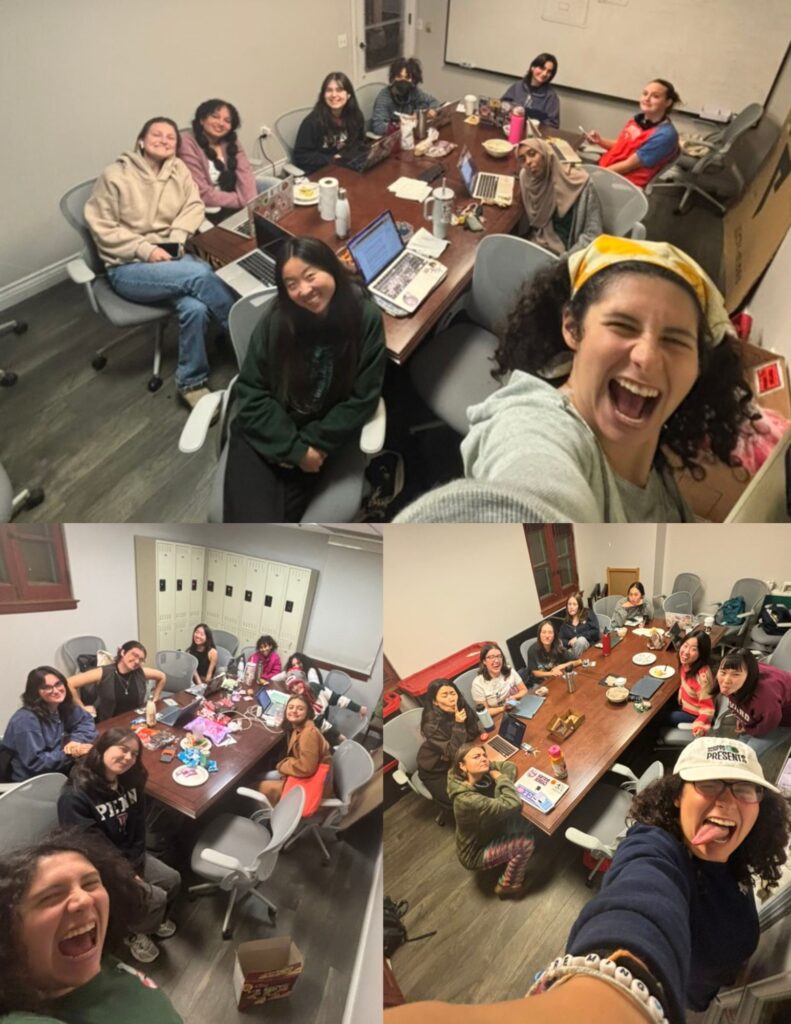Copy Editors
Amid the constant gossip about the Pomona English department’s “self-destruction” and the increasingly politicized and polarized atmosphere across the institution at large, we decided to take a critical look at our own school’s English department and the structural issues that hinder its ability to provide a welcoming and productive environment for all of its students.
Comprised of eight professors and 12 required classes, the major purports to focus on expanding students’ understanding of literature from different time periods and countries. However, after three years of taking Scripps English classes, instead of being exposed to a diverse range of literature that challenges our mindsets and opinions, we feel that we’ve been repeatedly stuck in a canon that refuses to engage with anything remotely relevant to the broader socio-political atmosphere both on and off campus.
Despite professors halting business as usual in class after the election this year, offering snacks and white women tears instead, there has been minimal mention of our 12 peers who Pomona College suspended, the countless Scripps students banned from Pomona’s campus, or even The Motley getting shut down for a month — despite how it is affecting our daily lives.
The problem begins with the major’s distribution requirements. As an English major and Asian American Studies minor, my academic interest lies in ethnic studies literature classes — classes that fulfill none of my major requirements outside of electives.
Instead, English majors on the critical track are required to take two British and one American literature class on top of the two introductory British and American literature courses. The two additional British literature classes must include one class before 1800 and one class after 1800, limiting students to learning about primarily white authors and critics.
Similarly, the one American literature class requirement for students on the critical track must be before 1900, which automatically excludes most ethnic studies literature classes as they tend to teach texts written during the 21st century. Constrictive requirements prevent the average English major from venturing outside of the predominantly white canon and exclude students of color from reading and critically analyzing texts written by those marginalized by the white patriarchal canon.
Additionally, in the past three years we’ve been here, Pomona’s English department has always held at least one ethnic studies English class — something that Scripps has failed to provide regularly.
The stipulation of the pre-1900 time period for the American literature requirement also forces students to take classes that often repeat texts included in the required introductory Readings in American Literature class.
It doesn’t help that our world literature requirement is called “global Anglophone literatures,” excluding translated texts and prioritizing English-speaking populations even as we gain the opportunity to read more global texts. When looking at the other colleges, we found that Pitzer’s requirement is accordingly titled “World Literature,” and Claremont McKenna’s major itself is titled “Literature” instead of “English.” Pomona’s seemingly few requirements simply confused us. This hyperfocus on language may seem trivial, but one thing the English major has taught us is close reading, and there seems to be an odd emphasis on English-speaking populations within the Scripps requirements.
Additionally, there is usually only one global Anglophone class offered at Scripps every school year, where most of the class demographic, along with the professor, are white. I was highly anticipating reading literature beyond the scope of the ordinary white American and British authors I usually had to contend with in the global Anglophone class I’m taking this semester. While I did find genuine enjoyment in much of the syllabus, the class atmosphere left something to be desired. Over the course of the semester, it became harder and harder to engage in fruitful conversation with my peers who struggled to engage with literature outside of their frame of reference.
Throughout my time in the department, professors constantly told me to speak up more in class; however, the points I do bring up are rarely engaged with by my predominantly white peers. I have little motivation to make a point about racial dynamics in books when I know my classmates will swiftly shift focus back to denigrating the portrayal of white women.
To be clear, the dismissive class environment is nothing new. After three years in the English department, I’m sufficiently used to leaving class burned out by another slight microaggression. “Not all colonization is created equal,” is a memorable recent one that left me both baffled and fuming.
Despite the ongoing genocide in Gaza that has martyred countless Palestinians, it would be comical to even suggest that the majority of the English department professors mention Palestine in their classes.
Last semester, both of us had a literary theory class and an ethnic studies class back to back, leading to some laughable tone switches as we speed-walked from a predominantly white class, that only got let out 15 minutes early the one day we discussed Edward Said’s theory of Orientalism, to a class full of South Asians that asserted that the question of Palestine and Orientalism is central to the field of Asian American studies.
This problem is compounded by the fact that six out of eight English professors are white — with one of the two professors of color currently serving as Associate Dean of Faculty and not teaching any classes — making an already white-dominated major and subject matter feel even more exclusionary for students of color.
Professors of color are often tokenized and expected to take on the disproportionate burden of diversifying the literary canon, such as incorporating texts that reflect the current political climate even if it falls outside of the class topic or their field of study. On top of the alienation professors of color may already feel due to lack of representation in their field, their efforts go overlooked and uncompensated while their white counterparts eschew responsibility to critically engage the discipline.
To be clear, it’s not that either of us hates English as a subject or even the department itself despite our grievances with it. However, as two students of color who have considered dropping the major multiple times, it’s increasingly vital that we address these structural issues that dissuade Scripps English students from engaging in meaningful and critical discussions about race. The course requirements and backgrounds of the professors primarily draw in white students, which further marginalizes students of color within the department and forces them to engage in dismissive discussions in micro-aggressive environments.
Change is not difficult. We aren’t beholden to a Eurocentric canon that loses relevance, even in academia, every passing year. We can look to other 5C English departments that don’t force students to abide by strict time period requirements, allowing for more flexibility within the major.
We must acknowledge that English has always been a colonial field, from its name to its project, but we can also emphasize how it holds the potential for radical change.
If we abandon literature as a subject, we allow the dominant colonial narrative to remain embedded within its project. However, imagine we create new narratives and new forms of storytelling that highlight marginalized voices and communities rather than suppress them. We have the power to rewrite the narrative and challenge cultural hegemony.
We can’t act like the classroom we operate in is a post-racial utopia when racism dictates our daily lives, from the suspension of primarily students of color at Pomona to the genocide in Palestine. English has always been and will remain a tool for political power. Let’s educate our students to use it as a tool for liberation.


